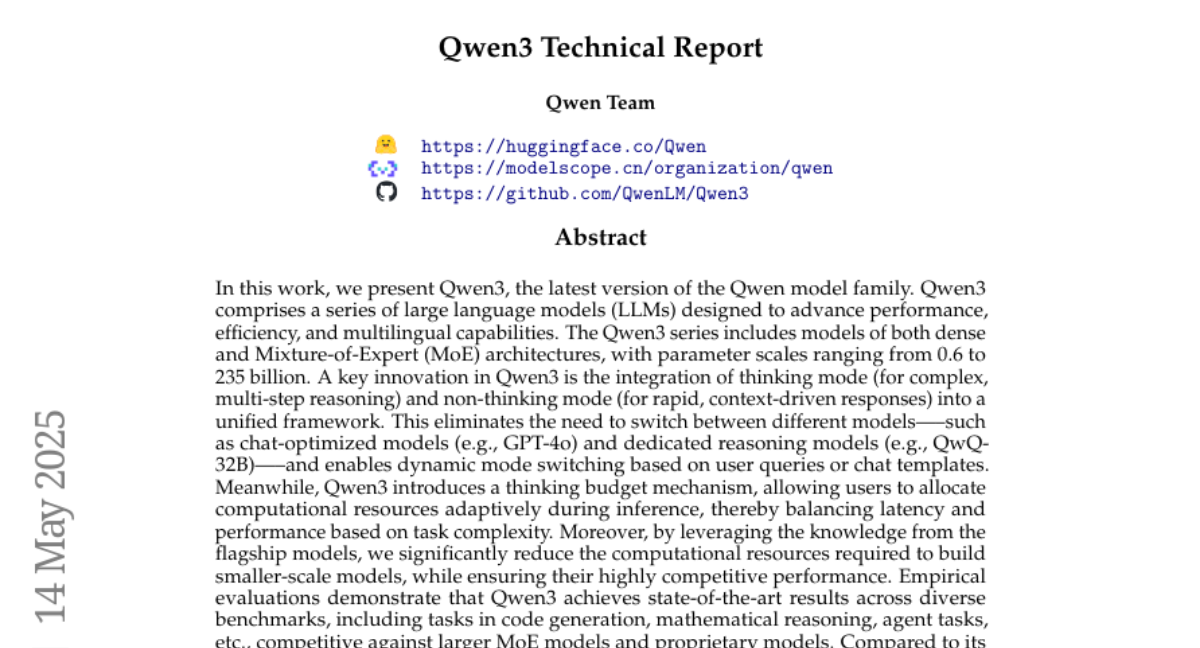Qwen3 Technical Report
An Yang, Anfeng Li, Baosong Yang, Beichen Zhang, Binyuan Hui, Bo Zheng, Bowen Yu, Chang Gao, Chengen Huang, Chenxu Lv, Chujie Zheng, Dayiheng Liu, Fan Zhou, Fei Huang, Feng Hu, Hao Ge, Haoran Wei, Huan Lin, Jialong Tang, Jian Yang, Jianhong Tu, Jianwei Zhang
2025-05-19

Summary
This paper talks about Qwen3, a new family of large language models that can switch between different ways of processing information, use less computer power, and perform really well on a wide range of tasks and languages.
What's the problem?
The problem is that most language models either use a lot of resources or are not flexible enough to handle different types of tasks and languages efficiently, which limits their usefulness and makes them expensive to run.
What's the solution?
The researchers designed Qwen3 to combine both 'thinking' and 'non-thinking' modes, so it can adapt to what’s needed for each situation. This approach helps the model save energy and computer resources while still being able to handle complex problems and support many languages.
Why it matters?
This matters because it means AI can be more accessible, cost-effective, and helpful for people all over the world, making advanced language technology available in more places and for more uses.
Abstract
Qwen3, a unified series of large language models, integrates thinking and non-thinking modes, reduces computational resources, and achieves state-of-the-art performance across various tasks and languages.